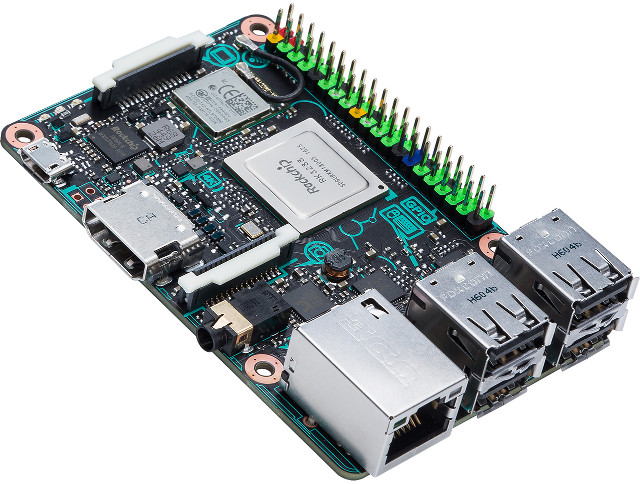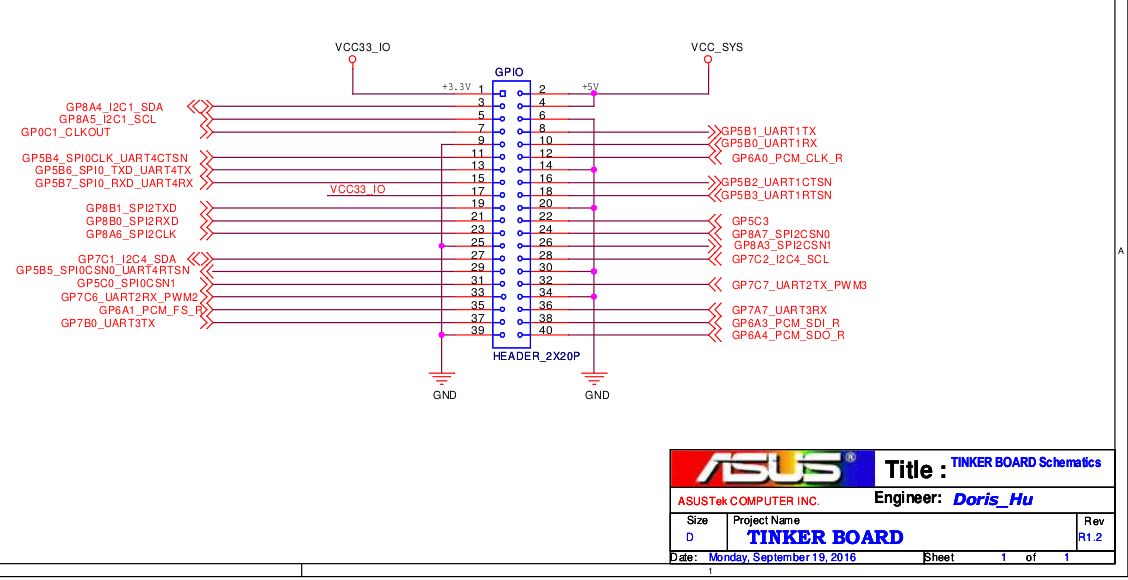We discovered ASUS Tinker Board powered by Rockchip RK3288 processor earlier this year via some slides hidden in a dark corner of the Internet… ASUS has been incredibly quiet about it, but as the board has finally started to sell in Europe on sites like CPC Farnell UK, Proshop (Denmark), or Jimm’s (Finland) for the equivalent of $57.5 without VAT or $69 including VAT, and more technology sites have started to write about it.

So people have been buying the board, and one even uploaded an unboxing video. One interesting part is the the top comment from the uploader in that video:
Currently, a £55 paperweight as I can’t seem to find a link to the OS image anywhere.
And indeed, ASUS appears to have launched a board without any support website, firmware image and documentation. Maybe that’s why they are quiet about it. But after using some of my voodoo search skills, I finally found firmware images for the board, as well as the schematics, and some other documentations on Asus website. [Update: New official link with the same files as of today (27/01/2017)]
 There are currently 10 documents & files for download on the site:
There are currently 10 documents & files for download on the site:
- Operating System Images – TinkerOS DEBIAN & TinkerOS KODI images
- Hardware Docs – Tinker Board Schematics (PDF only), 2D & 3D Drawings
- Software Docs – GPIO API for Python & C,
- Other documents
- Qualified Vendors List for devices tested with the board include micro SD cards, USB drives, Bluetooth headsets (A2DP), headphone amplifiers, Bluetooth keyboards & mice, HDMI TVs & monitors, AC adapters, Ethernet dongles, flash disks, and WiFi routers
- Tinker Board FAQ overview
- CSI & DSI configuration explaining how to use an external display and/or camera.
Note that there may be a reason why ASUS has not officially published the images yet: they might consider them alpha or beta (TBC).

Jean-Luc started CNX Software in 2010 as a part-time endeavor, before quitting his job as a software engineering manager, and starting to write daily news, and reviews full time later in 2011.
Support CNX Software! Donate via cryptocurrencies, become a Patron on Patreon, or purchase goods on Amazon or Aliexpress




